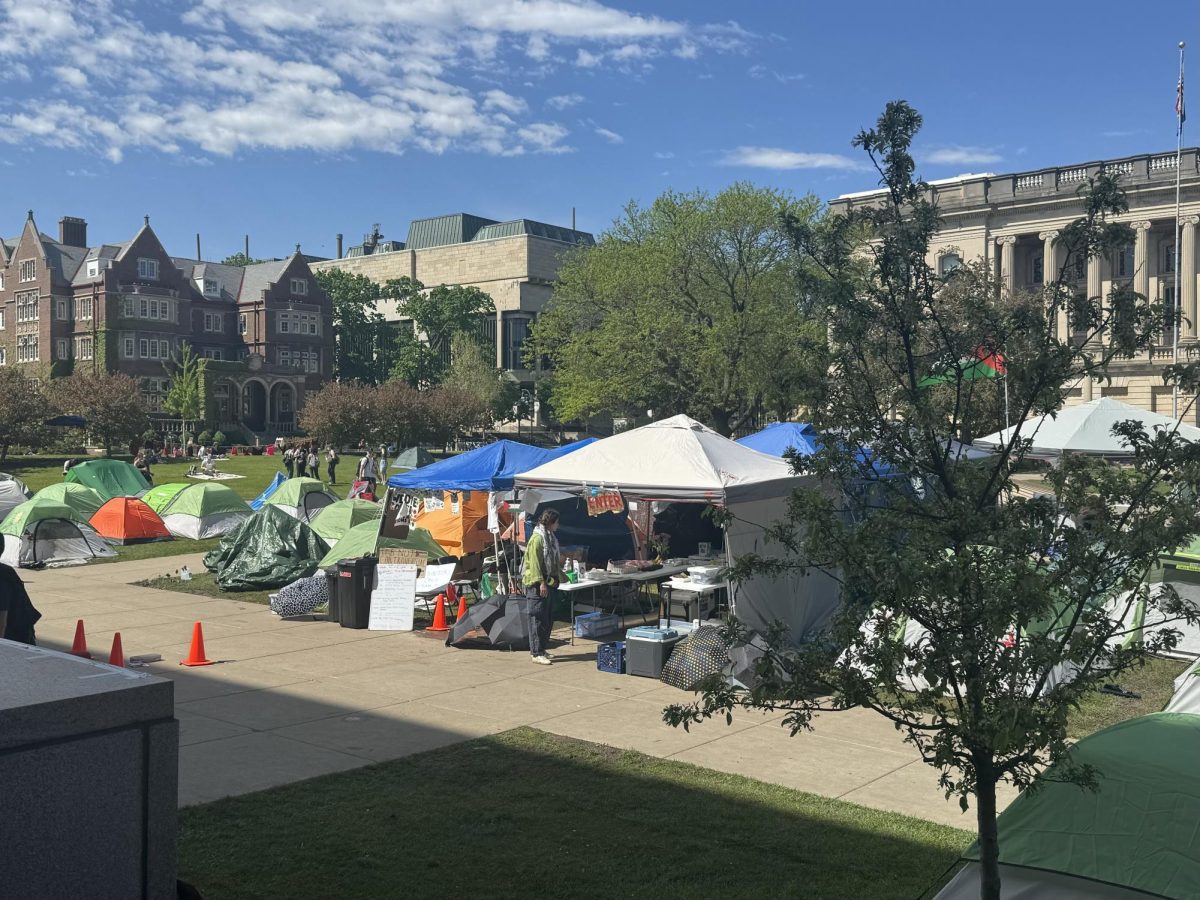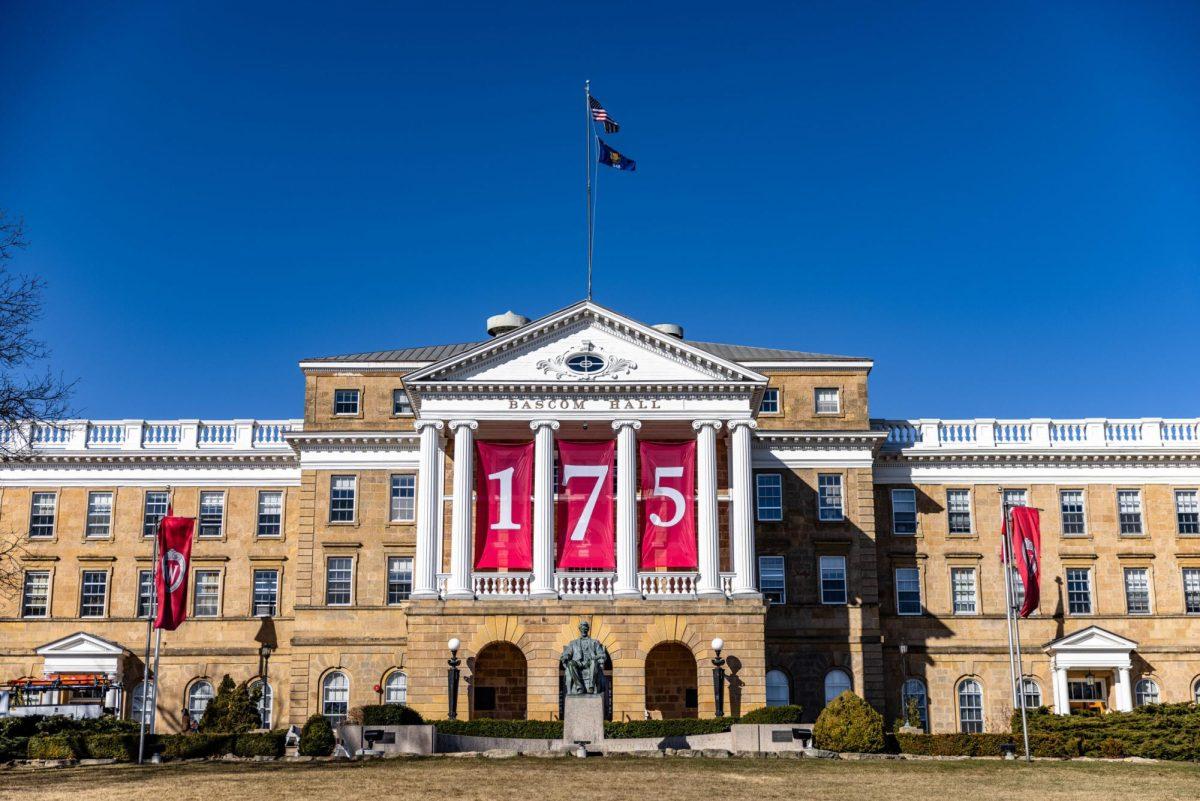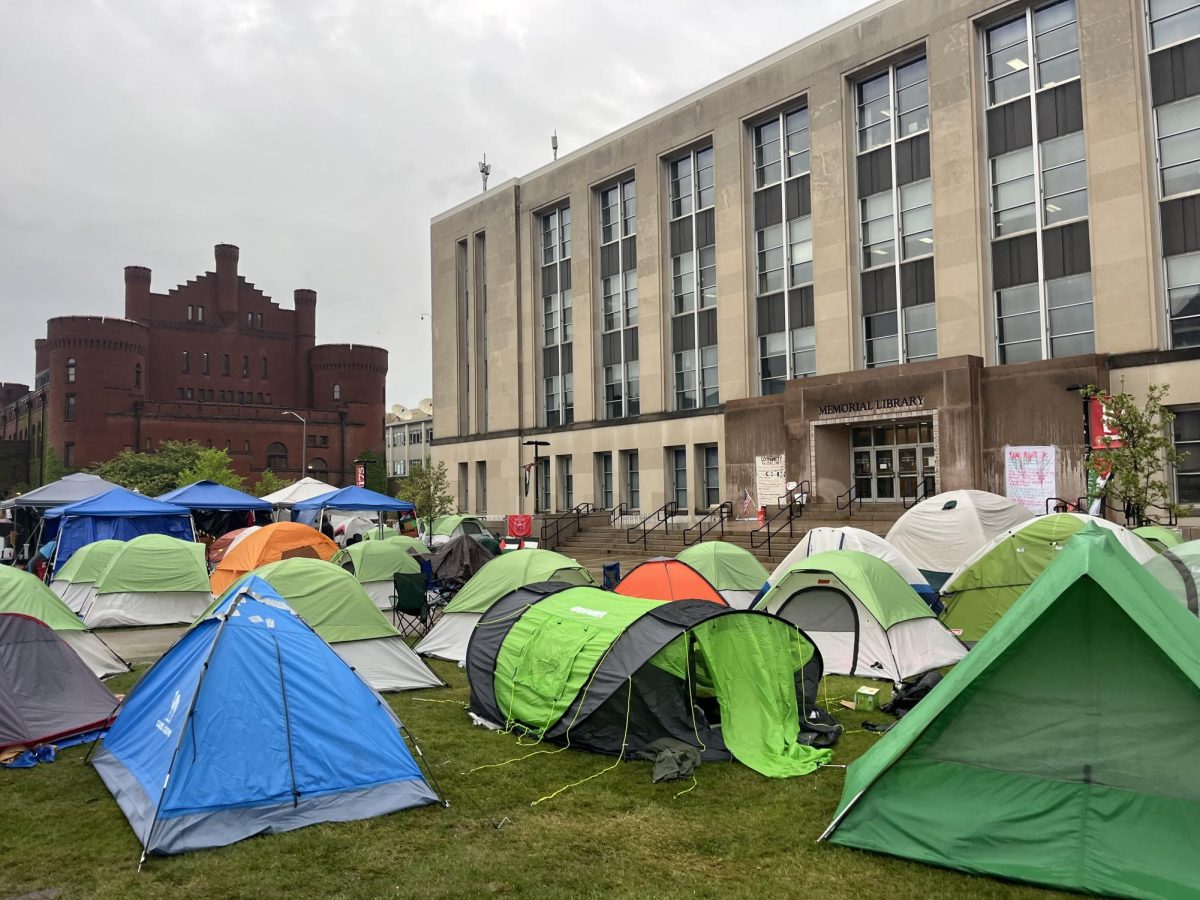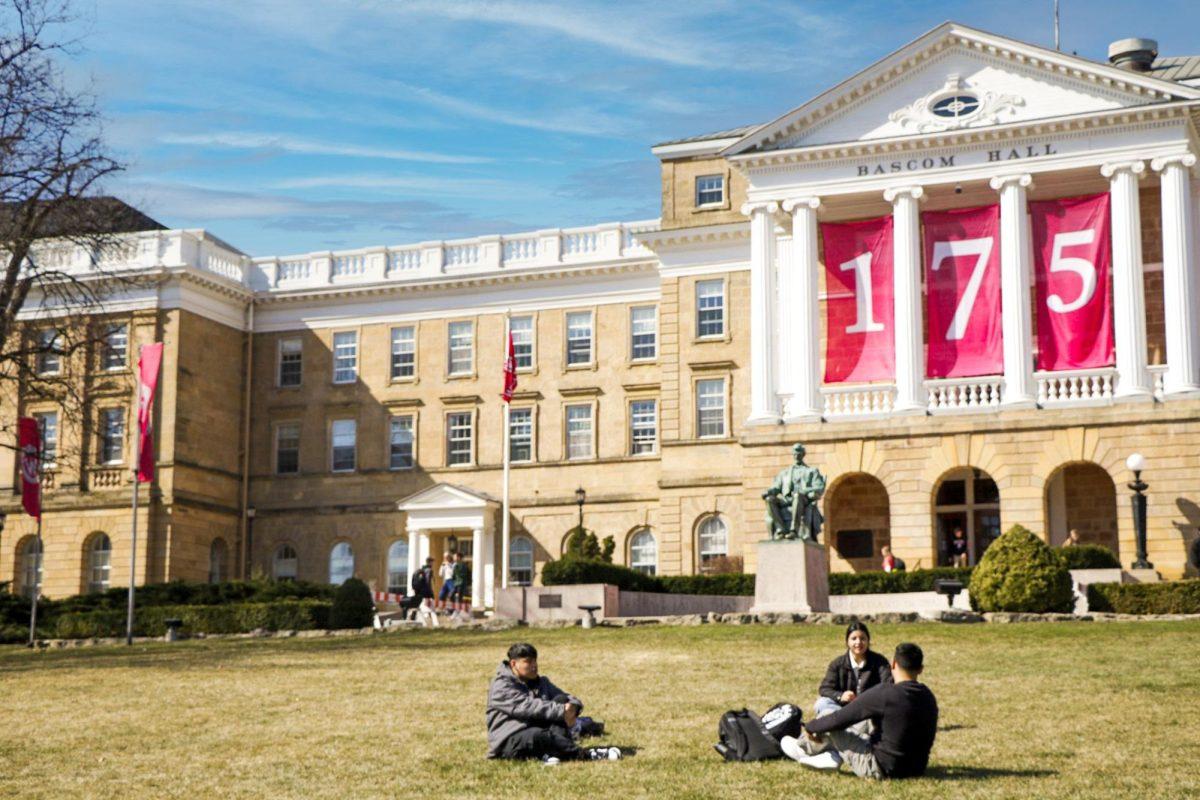As tuition costs continue to rise and college becomes less and less affordable for many students, the debate over the increasing influx of out-of-state students accepted into the University of Wisconsin remains a hot issue.
Enrollment numbers of nonresidents continue to increase each year, causing some Wisconsin residents to question whether the rising number of out-of-state students benefits or hinders in-state enrollment.
University administrators such as Provost Patrick Farrell believe a balance between in-state and out-of-state students is “hugely valuable” to the overall learning experience at UW.
“Wherever they’re from, different states or different countries, they offer different perspectives, different experiences and a different way of looking at issues,” Farrell said.
The UW System Board of Regents has also mandated a policy restricting the number of nonresident students allowed into the university.
According to the policy, the university must allot 75 percent of its undergraduate enrollment slots to residents of Wisconsin and Minnesota, leaving 25 percent for nonresident students from around the nation and the rest of the world.
As of last fall, nonresident students made up about 22 percent of the student body at UW — according to an enrollment report released by the university’s Office of the Registrar, approximately 9,700 students of the 41,466 enrolled in the university in the fall 2006 semester came from outside Wisconsin and Minnesota.
Compared to the fall 2005 semester, the number of out-of-state undergraduate enrollments has increased by about 250 students.
The percentage of out-of-state students has increased slowly over the last decade, but Farrell expects the percentage to stay the same for the next few years.
“I think that’s what we’ll do for the time being,” Farrell said. “The last two or three years, [the percentage] has been pretty flat. We don’t have any plans to increase the in-state and out-of-state enrollment.”
Additionally, the number of students admitted into the university from the large coastal states — New York and California — has also grown each year.
In fall 2006, the number of so-called “coastie” students increased by 100 from the previous fall semester.
UW sophomore Marc Larivee, an out-of-state student, said students from the east and west coasts are primarily attracted to a big-name university like UW.
“I think they come to the Midwest because they like the big school,” Larivee said. “It’s big in academics, and obviously it’s a good party atmosphere.”
However, according to Farrell, increasing out-of-state enrollment from all states does have an effect on the total number of students hoping to attend the university.
Because the number of freshmen admitted into UW remains the same — around 5,600 students — admission becomes more competitive, Farrell said.
“It is getting selective, and not in a sense that we have gone out and intentionally made it so,” Farrell said. “Because admission is so competitive, it’s a badge of honor to get in. A lot of good students will take that challenge.”
Mind the gap
Regardless of where they’re from, once admitted, both in-state and out-of-state students must deal with increasing tuition fees.
As tuition costs rise each year, both in-state and out-of-state students have become increasingly concerned with rising price tags. Admission into UW this past fall forced students from Wisconsin and Minnesota to pay nearly $6,740 for one year.
Students from other states paid $20,740 — nearly three times as much — for one year.
Compared to the fall 2005 semester, tuition has increased by $500 for all students.
Larivee, who hails from Michigan, said he understands the reasons nonresident students continually pay much more than students living in Wisconsin or Minnesota.
“I think it’s natural that we’re going to pay more, because we’re not paying state taxes,” Larivee said. “But it is getting a little expensive.”
However, university officials do not expect any drastic changes to decrease the gap between those paying in-state tuition and those who do not.
“There has to be a balance between who pays the bills for the state — they’re the priority,” UW spokesperson John Lucas said. “It’s important that there’s a differential. By paying an increased amount, it helps subsidize the Wisconsin residents’ tuition.”
Farrell agreed, saying most students from Wisconsin have already supported the university through taxes.
“There’s not much I can say to make [nonresidents] feel better,” Farrell said. “I don’t think it will change in any substantial way.”
Flipping the bill
Overall increases in tuition have pushed administrators in the UW System and Wisconsin legislators to create proposals aiming to alleviate the rising costs of tuition.
Last August, the Board of Regents created a budget proposal that would make higher education more affordable for students.
Part of the regents’ Growth Agenda for Wisconsin calls for increasing tuition at a decreasing rate: 3 percent for the 2007-08 year and 1.96 percent in 2008-09.
The average of the two increases would be less than 2.5 percent — the lowest proposed tuition increase in 25 years.
UW System spokesperson David Giroux said the Growth Agenda proposal has gained both public and private support around the state.
“It’s taking hold with average people and community leaders very strongly,” Giroux said. “As far as resident undergrad tuition goes, if it’s fully funded by the Legislature, it will in fact protect students from the high increases.”
The board is currently waiting for Democratic Gov. Jim Doyle to present the state budget before taking further action on the proposal.
But one legislator feels the regents’ plan is neither extensive nor realistic enough to bring tuition relief to students.
According to Mike Mikalsen, spokesperson for Rep. Stephen Nass, R-Whitewater, the state representative feels the regents’ plan asks for too much money from the state government.
“They made a proposal built upon the fact that they will get all of the [General Purpose Revenue] they wanted,” Mikalsen said. “That isn’t going to happen when the state is facing a $1.6 to $2 billion deficit.”
Mikalsen added a big school like UW should start prioritizing its needs to fit the budget.
“While we’re able to put some new money in, it won’t be able to buy down tuition like [the regents] wanted,” Mikalsen said. “Frankly, it is time for them to cut fat and trim things that don’t relate to the students. The focus has to be shifted back to the classrooms.”
Nass, who is now chair of the Assembly Committee on Colleges and Universities, is currently working on a different proposal that would temporarily freeze tuition for in-state students.
“On each and every campus, students are talking about reaching deeper into their pockets,” Mikalsen said. “Most college students understand there’s going to be some level of increase, but with the freeze, students can plan — especially those that are paying their own way or taking loans.”
He said a plan to slow increases for out-of-state tuition may not match the in-state freeze, but Nass is working to “reasonably determine” a better situation for nonresident students.
Like the Board of Regents, Nass will unveil his proposal after Doyle presents the state budget.
“We’re trying to create a window that in the period of time, students can take a breather from these increasing tuition rates,” Mikalsen said. “There’s no rationale that families of this state can afford to maintain and keep up with these increases.”
Mixing quality and affordability
Farrell said the university has struggled with the budget to keep the “high quality of education” for which UW is known.
“The challenge for us is to keep the quality of education; it’s a big concern for us,” Farrell said. “We’ve been squeezed the last few years, and we’re not quite sure we can do it forever.”
Outside sources have also noted the university’s struggle to keep the school “affordable,” as seen in “100 Best Values in Public Colleges” rankings released by Kiplinger’s Personal Finance magazine Jan. 8.
The rankings — which measured standards of academic quality against cost and financial aid — placed UW at No. 25, a significant drop from No. 15 a year ago.
Though the rankings may make it appear that a university education is becoming harder to afford, UW Director of Financial Aid Susan Fischer said the terminology within the report was unclear and incorrectly indicated the school had “slashed” need-based aid.
“We’ve never slashed or cut any need-based aid — the cost has gone up, but we haven’t reduced it,” Fischer said. “It’s a different deal.”
Fischer added the inability of the university to provide such aid to all students in need of it was a major factor in the ranking.
Larivee believed the university should take more action to help students — both in-state and out-of-state — with financial aid.
“The university needs to find a better way to offer financial aid to students,” Larivee said. “With tuition increasing, it’s getting more expensive for students to pay.”
While Mikalsen agreed the lack of need-based aid pulled the university’s ranking down, he also said UW administrators could do more to help provide aid.
“[T]hey have the ability to raise a significant [amount] of private money,” Mikalsen said. “We need to have bigger discussion of obtaining need-based grants by private donations and finding additional private aid.”
Maintaining prestige
The student body will continue to debate whether more nonresident students should be admitted into UW, especially as admission numbers near the mandated limit.
Constant tuition increases have not deterred out-of-state applications, and most UW administrators and state officials believe Wisconsin’s flagship university will continue to draw a strong number of out-of-state students.
“I will acknowledge the nonresident tuition is high, but it doesn’t seem to be stopping the admissions applications from nonresidents,” Fischer said. “It’s very high, but no one’s forcing a student to come from out-of-state.”
Mikalsen agreed, saying the university’s “primary goal” is to provide undergraduate education to residents of Wisconsin.
“With regards to out-of-state enrollment, for Madison, it’s not that significant,” Mikalsen said. “It has that much of a prestige and image around the country that those from out-of-state can afford it and will continue to pay out-of-state tuition. It is one of the premier institutions in the country, and there will always be a demand.”
Farrell said the high percentage of nonresident enrollment at UW helps its national recognition.
Those born in Wisconsin see the university as the flagship school of the UW System but may forget its renowned reputation throughout the country, Farrell added.
“If you’re from California, New York and other places, and you’re thinking of really good schools you want to go to, this is often a place you think about,” Farrell said. “They’ve heard Madison is a fun place to be and they want to study [here]. … Those accommodations make it pretty attractive.”














